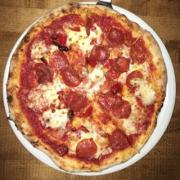Other than a dovetailed front sight, does the Beretta Brigadier slide convey any advantage over the standard 92 slide?
I previously read that the Brigadier slide, being heavier, reduced recoil and split times. Is this borne out in testing?
The reason I ask is that it appears that USPSA shooters are favoring lighter slides (with tri-top or similar removal of material from the slide) to reduce the weight of the reciprocating mass on the gun. The idea is that a heavier frame and lighter slide are fastest. This is in direct contrast to the Brigadier concept.



 Reply With Quote
Reply With Quote




